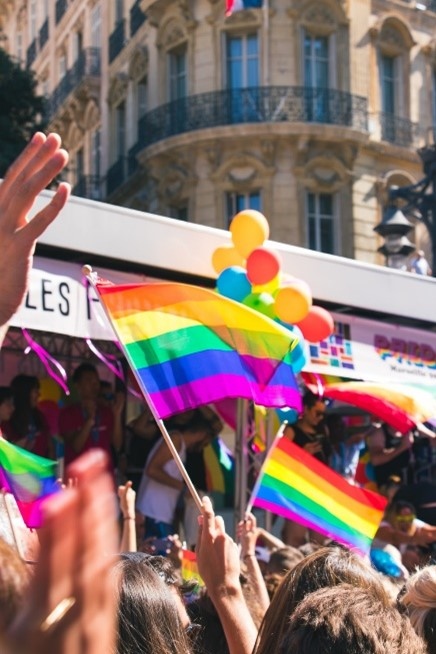Blog: Building an LGBTQ+ inclusive workplace
Building an LGBTQ+ inclusive workplace
(or 10 ways to fly the Pride flag year-round)

From Alan Turing to Megan Smith, former chief technology officer of the United States, and beyond, LGBTQ+ technologists have made vast strides in helping drive the technology industry forward. A few years ago, data suggested that, in major tech hubs such as San Francisco and Seattle, the LGBTQI+ population is 2-3 times that of the national average. Research shows that diverse leadership makes companies more innovative (critical in tech) and can deliver higher revenues.
Academic estimates have found that 5.1% of U.S. women identify as LGBTQ+ as do 3.9% of U.S. men. Their representation in corporate America, however, is much lower than these levels.[i] Despite visible corporate support (such as sponsoring Pride events), today’s workplaces are largely falling short of full inclusion. According to McKinsey’s Women in the Workplace research, LGBTQ+ women are more underrepresented than women generally in America’s largest corporations. Just four openly LGBTQ+ CEOs head these corporations, only one of whom is female and none of whom is trans.[ii]
Our research shows that stress increases when a person experiences ‘onlyness,’ or being the only one on a team or in a meeting with their given gender identity, sexual orientation, or race. Employees who face onlyness across multiple dimensions face even more pressure to perform. For LGBTQ+ women, who are workplace minorities in both gender and sexual orientation, the only experience is common—and particularly challenging—in corporate environments. LGBTQ+ women are twice as likely as women overall to report being an ‘only,’ and they’re seven times more likely to say so than are straight white men. LGBTQ+ women of color are eight times more likely than straight white men to report onlyness.[iii]
So, how do you create a workplace culture that attracts and retains members of the LGBTQ+ community?
Here are some ideas:
- Educate yourself. Talk to members of the LGBTQI+ community and hear what support would most benefit them. If you have a Pride@ ERG, that's a great place to start. If you don't, here is a list of LGBTQ+ organizations that can help.
- Update your employee handbook to be inclusive of sexual orientation and all chosen genders and pronouns in anti-discrimination and anti-harassment policies.
- Show your support. Fly the Pride flag. Celebrate Pride month with signage and images.
- Encourage the inclusion of preferred pronouns on email signatures and business cards and, when required, in business communications.
- Prevent and address microaggression and demeaning and inappropriate behavior.
- Encourage company-wide bias and inclusion training.
- Create structural support for trans and non-binary employees (such as offering health coverage that includes hormone therapy and sex-reassignment surgery, medical leave for transitioning colleagues, and all-gender washrooms).
- Have clearly defined and communicated career pathways and mentorship opportunities.
- Have a family leave policy in place that treats all parents equally.
- Provide benefits for domestic partners.
[i] McKinsey, How the LGBTQ+ community fares in the workplace. https://www.mckinsey.com/featured-insights/diversity-and-inclusion/how-the-lgbtq-plus-community-fares-in-the-workplace
[ii] Ibid.
